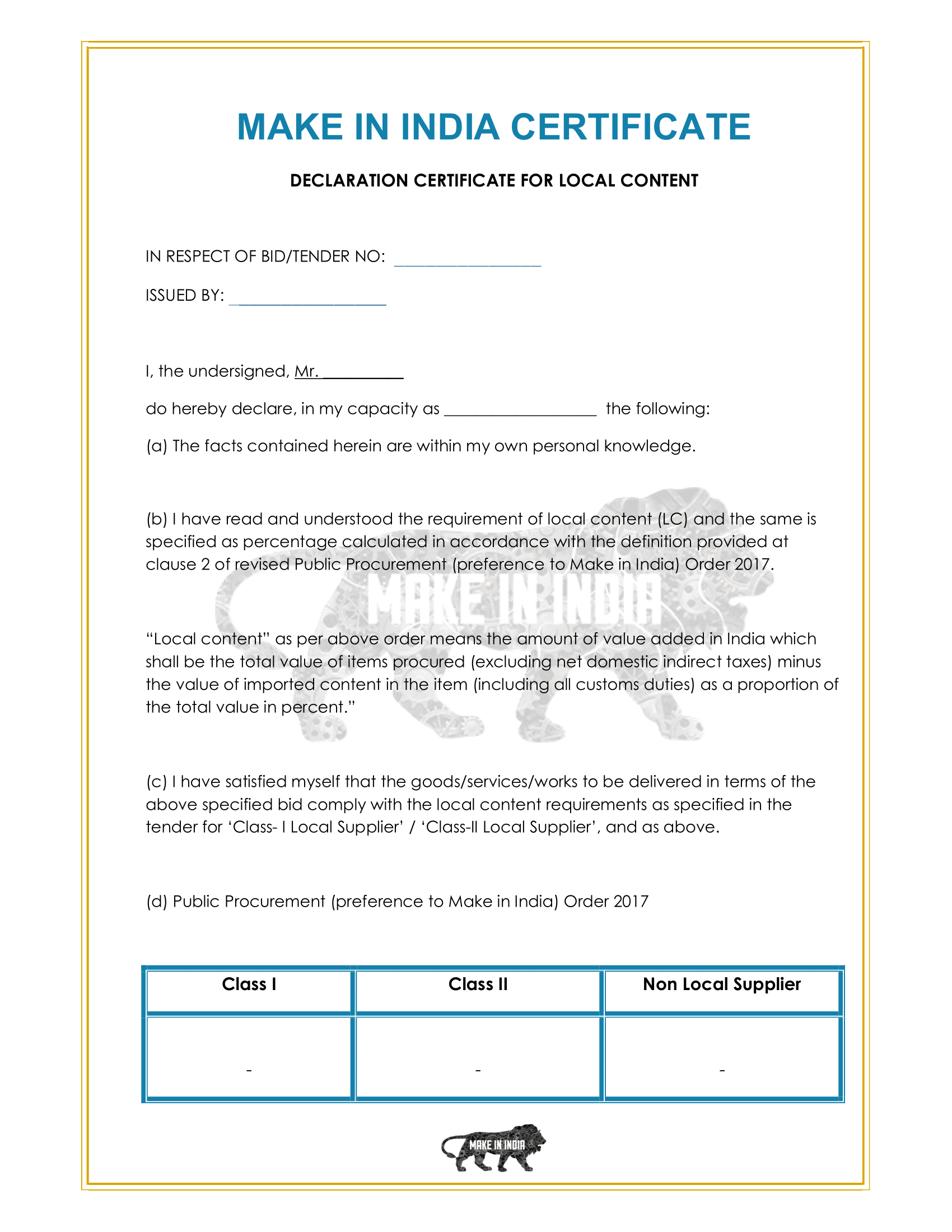Updated on July 05, 2025 01:08:13 PM
The Make in India program has become revolutionary in numerous industries with a positive impact on the textile sector. The global demand for textile products is rising steadily and India is aims to become a major hub for textile production. Make in India for textile sector promotes technological development, decreasing reliance on imported goods, and positioning India as the leading manufacturing hub of the textile sector. The government is supporting various policies such as the Production Linked Incentive (PLI) Scheme to foster the textile sector and creating opportunities for increased production capacity. A detailed insight into how the Make in India for textile sector is transforming the textile industry and thus setting the path for India to become the leading textile exporting nation in the world.
Make in India Certificate [Sample]

Table of Content
The Make in India program is developed to improve the textile sector and increase the production capacity of the country by encouraging manufacturing of fabric, garments, made-ups and carpets. Make in India for textile sector focuses on developing textile technologies, and offer a platform for manufacturing and technological advancement, paving the way to make India a textile hub of the world. The Make in India for Textile Sector helps to decrease the import dependence and increase the employment in the country of production to support the growth of India as an industrial nation.

The Make In India initiative holds massive potential for changes in the textile industry and provides for it a foundation that could help expedite industrial and economic growth in India.

The professional fee for preparing a CA-certified MII certificate on an urgent basis is ₹9,999, and the issuance of regular certificate costs around ₹7,499.
| Particulars | Fees |
|---|---|
| On urgent basis | ₹ 9,999/- per certificate |
| On regular basis | ₹ 7,499/- per certificate |
Note: The aforementioned Fees is exclusive of GST.

The Make in India initiative promises a revolutionary advantage to the textile industry contributing its fair share in India’s industrial and economic revolution.
The PLI scheme aims at textiles items manufacturing in the country encouraging production of natural and blended fibers, garments, etc.
The Ministry of Textiles has laid down minimum local content standards for various kinds of textiles so as to promote enhanced levels of value addition from within the country. The specific requirements are as follows:
When offered for bidding, suppliers must submit self-certification that such item meets the stipulated minimum local content standards at the time of bidding or solicitation. If the procurement value is more than Rs. 1 crore then the supplier needs to furnish certification of statutory auditor or practicing chartered accountant indicating the percentage of indigenization. Claims made are considered as violations of integrity rules and anyone who does so can be penalized or debarred from operations for up to two years in accordance with the General Financial Rules.
It aims to promote fresh textile parks apart from promoting advanced machinery in the industry for its growth.

The Make in India initiative focuses on increasing the production of indigenous textiles and components:

Despite the significant growth driven by the Make in India initiative, the textile sector faces several challenges:

Conclusion
The Make in India initiative has a massive positive impact on the textile sector in India and the textile industry to achieve self-sufficiency. Government policies under Make in India program such as PLI Scheme and Local content policy have also boosted up India as a competitive textile hub. The Make in India for Textile Sector improves supply chains, while building employment by supporting indigenous production of fabrics, garments, and carpets, as well as encouraging investments. Nevertheless, some of the problems which have continued to challenge the industry are capital intensive nature, technological disadvantages, increased competition from global counterparts and poor infrastructure. But with some sort of interventions the textile industry under make in India is capable enough to put India again on the map of largest exporters of textiles across the globe.

At Professional Utilities, we leverage our industry knowledge and expertise to help businesses navigate complex regulations, minimize risks, and optimize operations for maximum efficiency and profitability.






Frequently Asked Questions
The Make in India initiative focuses on Indian textile production, technology advancement in textile industry, minimum import and exports dependency on other countries and establishing India as a prominent exporter country of textile products.
The Make in India for textile sector also helps in the manufacturing of goods locally, investment generation, employment, supply chain enhancement and technology development, which are highly advantageous to the textile industry of India.
The standards for Make in India for textile sector require the fabrics to consist of 100% in the case of cotton fabric, 85% in the blended fabric case, 90% in the case of natural fiber garments and 85% in case of MMF blended garments. In the case of carpets, the threshold is set at 90%.
The Make in India program has the ability to make India a preferred exporter of textile and clothing products that would cause economic growth, employment opportunities and improvement in the supply chain domestically and internationally.
Speak Directly to our Expert Today

Reliable

Affordable

Assured
Make in India Initiative Across Key Sectors